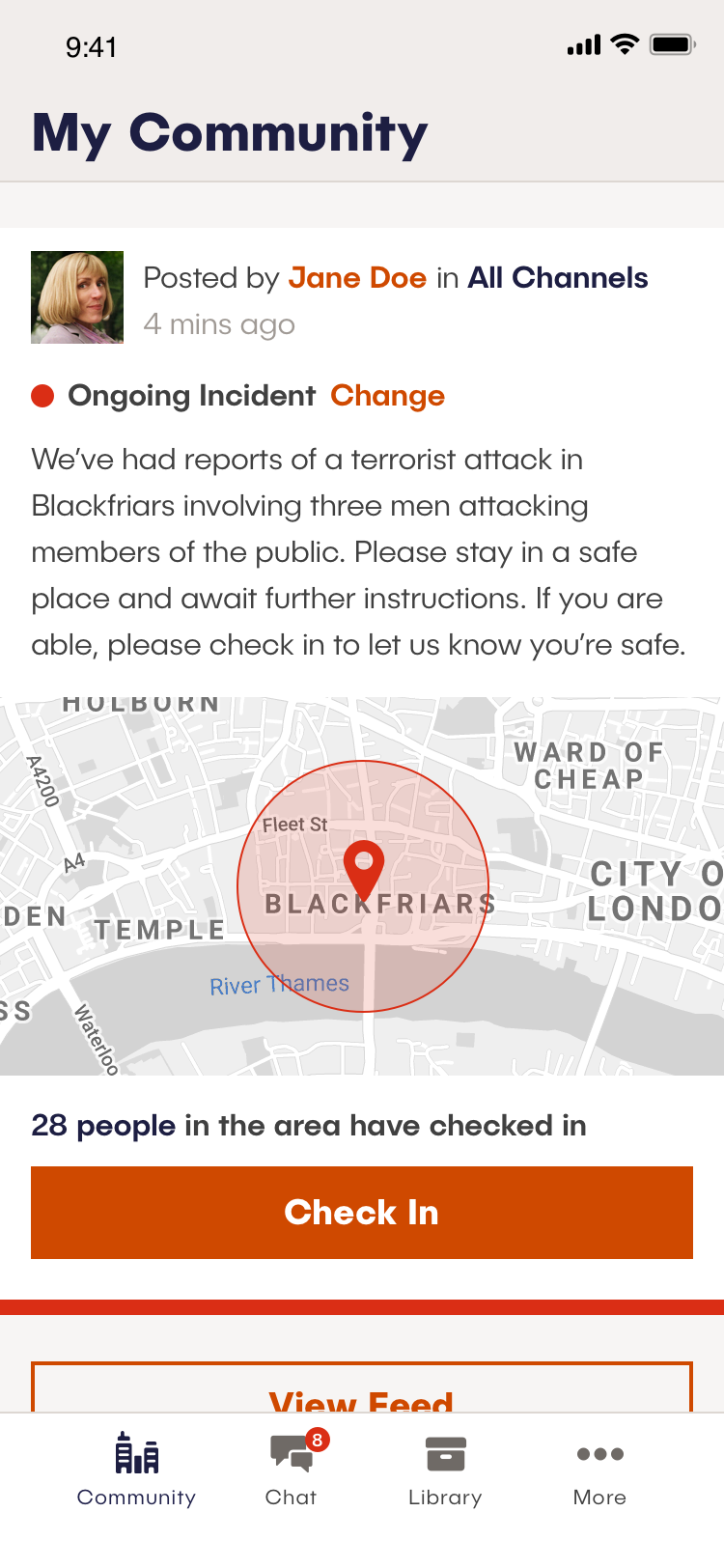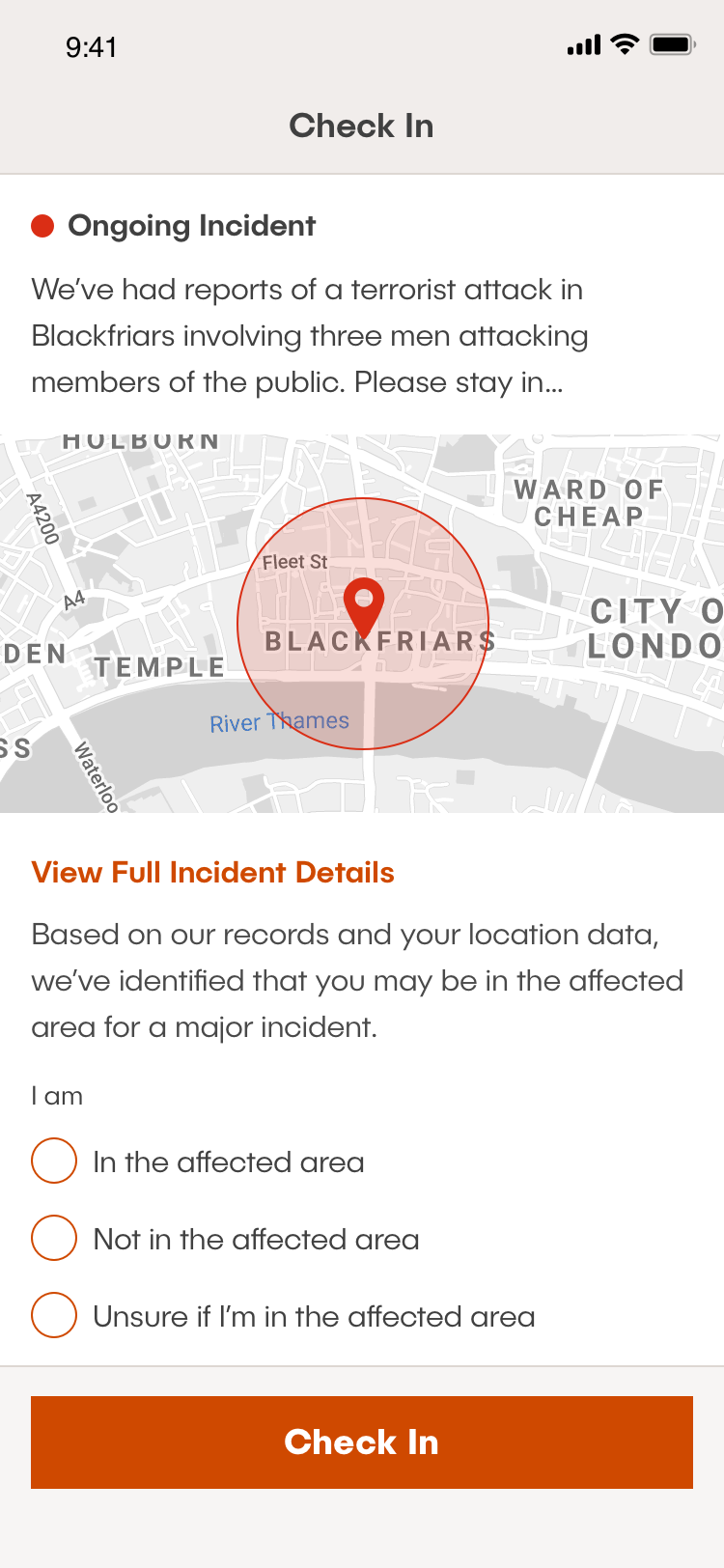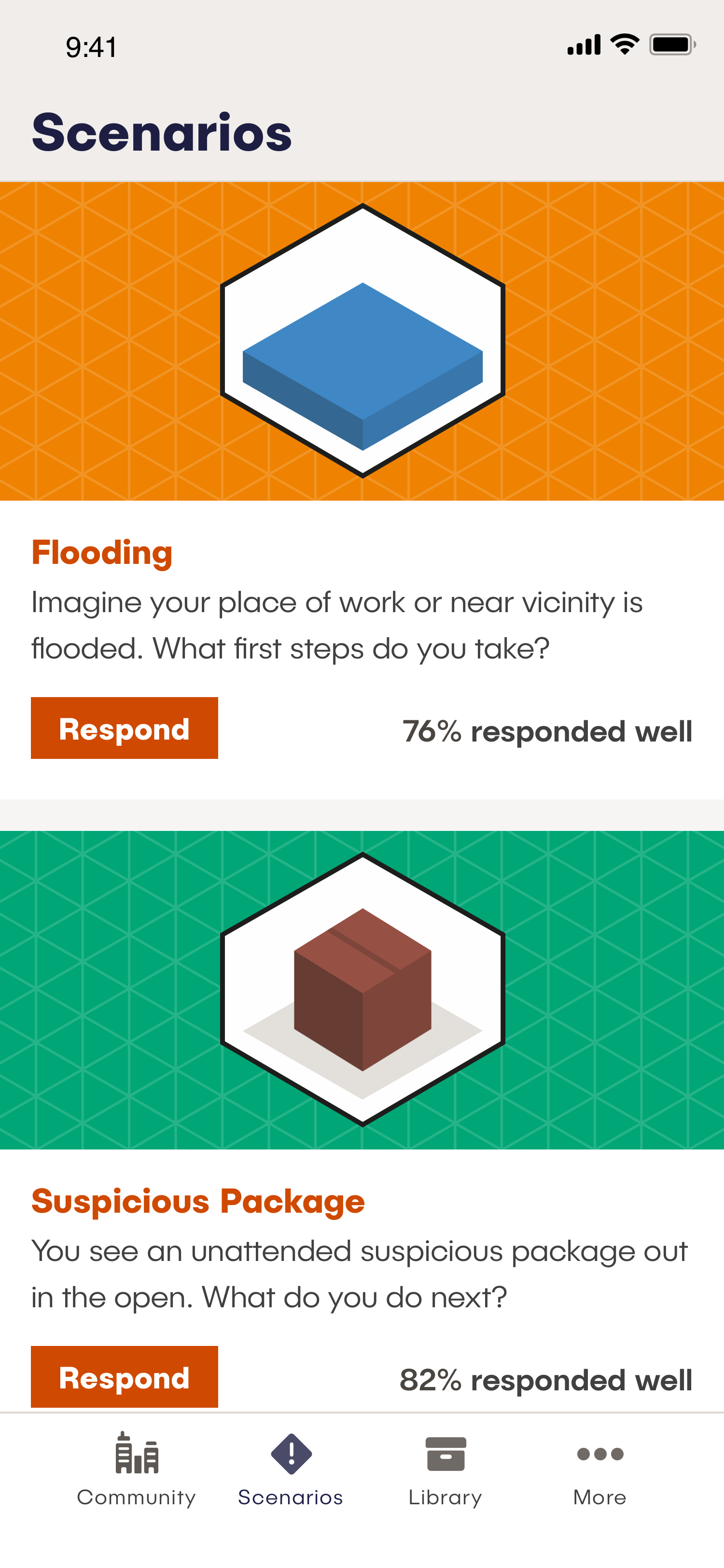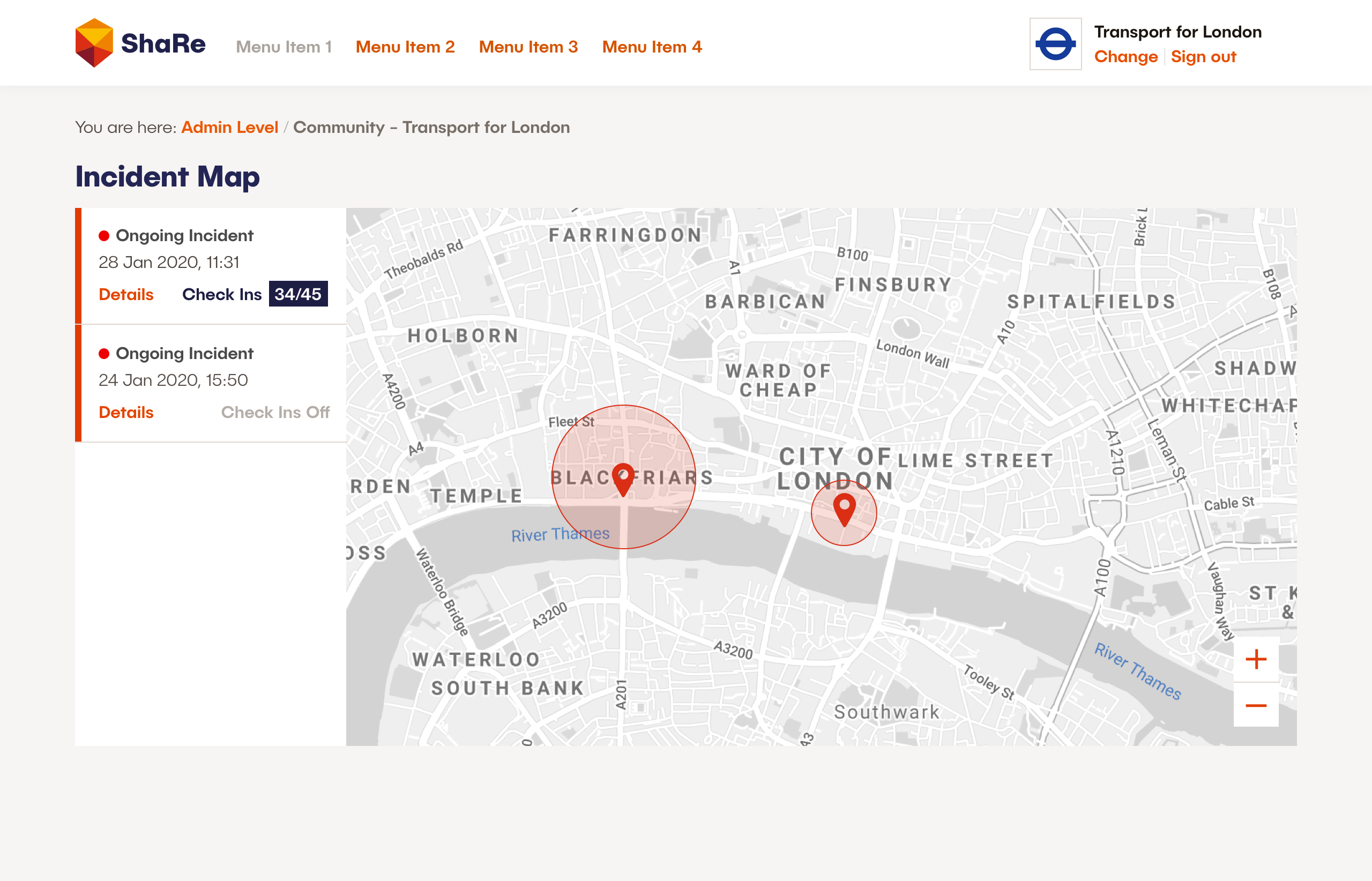Case Study
ShaRe was originally ARC (App for Resilient Communities) – an experimental app built for Barclays allowing various teams to post alerts, events and more in an effort to improve corporate resilience. No designs were produced for the original prototype but it was shown to a handful of organisations as a proof of concept. I was tasked with rebranding and overhauling the experience in early 2020 after a partner dropped out, taking the ARC name with them. Trying to come up with a new brand name that still incorporated the somewhat clunky word “Resilience” in some way, I pitched ShaRe as a shorthand for “Shared Resilience”. Within a week or so, after a short branding exercise, we had a new name and a new brand.
I was asked to approach the existing prototype redesign mostly as a rework, remaining conscious of not creating a huge workload for the dev team. In addition to this I was to add a new feature – a resilience assessment tool. As the existing application had essentially been designed by a developer, there was room for reworking functionality if I could highlight an issue with the existing structure of flow.
The assessment tool was conceptualised and planned by Resilience First, our expert partner. Reviewing the 25 question long survey provided highlighted a need for the ability to save and return to it at a later date as well as a need for some kind of user tiering. The average employee of an organisation has no sway over resilience in any meaningful way so they wouldn’t be able to do much with the resources or advice provided with your results. There also wasn’t a dedicated place in the app for resources, they just appeared in a feed organised by importance using an algorithm, so we would need to create an area to host these files and advice tidbits so we could display them correctly and users could easily refer back to them at a later date.
We decided on 3 distinct tiers:
- an average employee whose responsibility may include reporting local issues (like road closures, etc) and completing short “scenario” quizzes, outlining how they think they should respond to a given incident (like fires, unattended packages, etc)
- a “resilience influencer” or someone who has some ability or capacity to change resilience policy, hire staff to improve resilience and more
- an administrator, someone who has access to the CMS and is expected to administer and moderate the platform
Throughout this process there was a conscious desire by some to reuse or “lift and shift” features from one of our other products, engage4. I pushed back heavily on this, not only because the apps were on different codebases so sharing features wouldn’t be realistic but also because I was keen to create a distinct offering. I rolled back the social aspects of the app, restricting them to the resilience influencers. Instead the focus of the feed became reporting department specific incidents and issues for the awareness of all users, clearly signposted by a traffic lights system of statuses that also fed into how “important” they were considered by the existing sorting algorithm. It was assumed that this was something an employee may occasionally use, mostly to supplement or confirm training they had received, but that the main day-to-day users would be people whose responsibilities were predominately focused on corporate resilience.
As of late 2020, development on ShaRe has been parked due to the pandemic.









